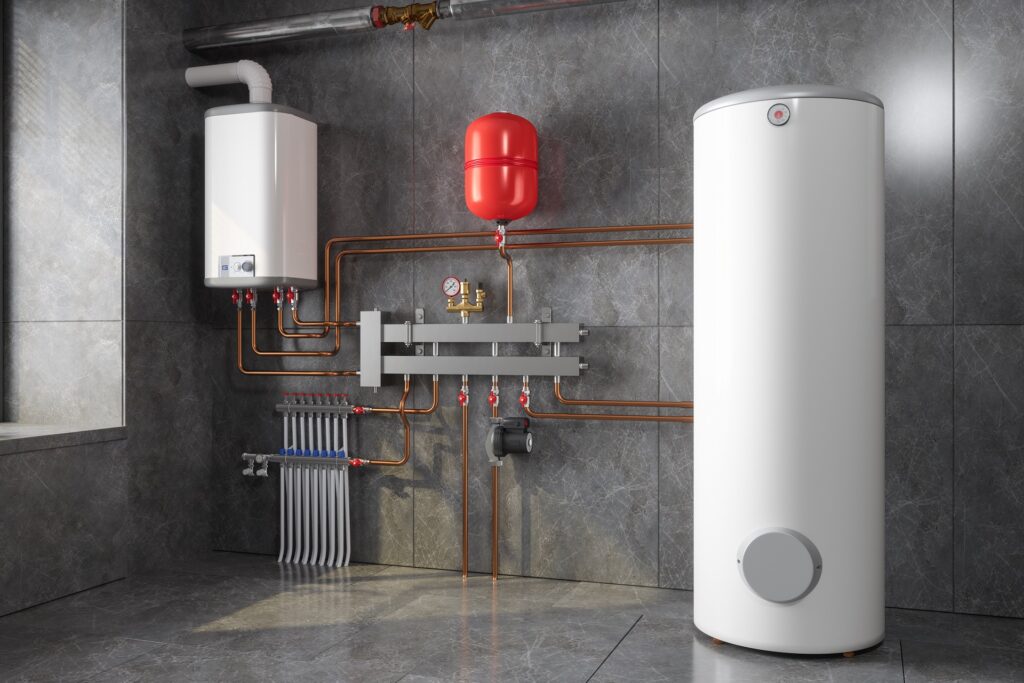Green Revolution: Eco-Friendly Boiler Options and Installation Practices Guide
You would probably agree that in today’s environmentally conscious era, the way we heat our homes is more important than ever. With a growing concern for reducing our carbon footprint, homeowners are seeking eco-friendly alternatives to conventional heating systems.
Staggs Plumbing brings you a comprehensive guide to navigating the green revolution in home heating with eco-friendly boiler options and installation practices. Whether you’re new to the green movement or looking to enhance your eco-efforts, this guide will walk you through the process of making your home heating more sustainable and efficient.

Understanding Green or Eco-Friendly Boiler Options
Solar-Powered Boilers: Harnessing Clean Energy
Solar-powered boilers use energy from the sun, converting it to heat water or air, and are a prime example of renewable energy applications for homeowners. By integrating photovoltaic technology, solar boilers can operate entirely off the grid, significantly reducing your reliance on non-renewable energy sources. While the initial investment can be higher, incentives and long-term cost savings make this an attractive green option.
Biomass Boilers: Utilizing Organic Materials
Biomass boilers use organic materials, such as wood pellets or chips, as a sustainable fuel source. They offer a carbon-neutral alternative to traditional gas or oil boilers, as the CO2 produced during combustion is offset by the carbon absorbed during the growth of the plants. The versatility of fuel options and the potential for energy self-sufficiency make biomass boilers a strong contender for eco-conscious homeowners.
Heat Pumps: Efficiently Transferring Heat
Heat pumps are a highly efficient alternative to traditional heating systems. By extracting heat from the ground, air, or water and transferring it to a heating distribution system, heat pumps can provide up to four times more heat energy than the electrical energy they consume. This not only reduces your home’s environmental impact but also brings significant long-term energy cost savings.
Best Practices for Your Next Boiler Installation
Proper Sizing and Placement
The first step in the installation process is choosing the right size and location for your eco-friendly boiler. Sizing is crucial to ensure that the system can meet your home’s heating demands without unnecessary energy waste. Placement is also essential, as correct positioning can optimize energy efficiency and minimize heat loss in the distribution system.
Energy-Efficient Controls
The integration of energy-efficient controls with your new eco-friendly boiler system is paramount. Smart thermostats, zoning controls, and weather compensation units can enhance the performance of your heating system, ensuring that energy is used only when and where it’s needed. These controls not only increase comfort but also contribute to lower energy bills and a reduced environmental impact.
Regular Maintenance
Regular maintenance is critical to keeping your eco-friendly boiler operating at peak efficiency. Performing annual checks, cleaning, and tuning-ups can extend the life of the system and prevent energy waste. Maintenance also includes checking the efficiency of the distribution system, including insulation, to ensure that your heating system is working optimally.
Upgrading Insulation and Windows
An often overlooked but critical factor in maximizing the efficiency of your new boiler system is the insulation and window quality of your home. Upgrading to high-quality insulation and double or triple-glazed windows can significantly reduce heat loss, meaning your boiler works less to maintain a comfortable temperature.
This not only enhances the eco aspect by further lowering energy consumption but also contributes to a quieter, more peaceful living environment. Investing in these upgrades can result in considerable energy savings and a more consistent indoor climate, making it a smart long-term choice for any eco-conscious homeowner.
Counting the Costs: Economics of Green Boilers
Initial Investment vs. Long-Term Savings
When considering the cost of an eco-friendly boiler, it’s important to look beyond the initial purchase price. While systems like solar and biomass boilers may have a higher upfront cost, they offer substantial long-term savings on energy bills and potential tax incentives. Who wouldn’t love that? It’s an investment in your home’s value for which you will reap the rewards month in and month out and a commitment to a sustainable future.
Environmental Footprint: How Green Boilers Can Make a Difference
Reduction in Carbon Footprint
One of the most significant benefits of eco-friendly boilers is the substantial reduction in your home’s carbon emissions. Solar, biomass, and heat pump systems all offer lower or carbon-neutral operations, contributing to global efforts to combat climate change by reducing the greenhouse gases emitted from home heating.
Energy Efficiency Ratings
Understanding the energy efficiency ratings of different eco-friendly boiler options can help you make an informed decision. Look for systems with high-efficiency numbers, which indicate how effectively the boiler uses its fuel to generate heat. Higher ratings translate to lower energy costs and a greener home.
Taking the Green Leap
The shift to eco-friendly boiler options is more than a trend—it’s a vital step towards a sustainable, clean energy future. With the variety of green options available and the potential for long-term savings, there’s never been a better time to make the switch. Staggs Plumbing is here to support you in your green home revolution, offering expert advice and top-notch installation services for your eco-friendly boiler needs. All you have to do is call our team at 972-833-8660, starting today!
Homeowners should take comfort in the fact that their choice to “go green” goes beyond just heating their home—it’s a decision that decreases their bills, positively impacts the environment, reduces our collective carbon footprint, and sets an example for others to follow. With a little dedication and the right information, a greener, more efficient home is well within reach.


